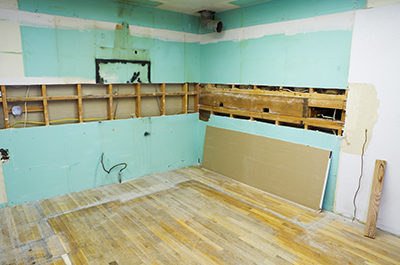For small holes up to roughly ½” you can simply use spackling compound and a putty knife. Use metallic snips to chop a bit of recent corner bead to suit the restore area (picture 3). Apply a coat of joint compound to the nook, set the bead in place then apply one other layer of joint compound over it. Let dry utterly then add one other layer or two of compound depending on what is needed (image 4). The important thing to patching torn drywall paper is to seal it first with an oil- or shellac-primarily based sealer (KILZ Authentic and BIN are two brands).
Instead get a wider taping knife—a 6-in.-broad putty knife will do—and simply skim all the space with joint compound. Popped screws and nails signal a difficulty behind the drywall, so it is advisable to do more than just drive them again into the wall to fix the issue. For holes larger than 6 inches, you may create a drywall patch with a unique attachment method for the repair.
Let it dry and sand it easy. Lower a sq. of drywall barely larger than the outlet. Drywall injury can range from small cracks to massive holes, however most repairs are simple and inexpensive to fix. Place 1’x four’ cleats within the wall behind the opening, and fasten them in place with drywall screws. When hand sanding giant flat areas, you might also need to use a rubber sanding block to help the sandpaper to verify the sanding surface is completely flat.
Nations Drywall Restore is a small firm owned and operated by Richard Nation. You’ll find setting-sort compounds wherever drywall taping supplies are offered. Cowl the patch and tape with joint compound, feathering the perimeters. Cowl the whole patch with joint compound until the strains are camouflaged, feathering the perimeters. In relation to minor drywall repairs, few products are more versatile and simpler to make use of than adhesive-backed mesh reinforcement tape.
Sand the wall after the ultimate coat dries. Let dry and sand smooth. Your provides will include ready-mix joint compound; 2-inch drywall tape, both perforated or mesh; taping knives in four-, 6-, and 10-inch sizes; and 400-grit sandpaper and a sanding block. It’s effective to fill screw holes and other small wall dings with patching compound, however for dime-measurement and larger repairs, and for holes which can be deep, it’s best to use a joint compound that units up by a chemical response.
